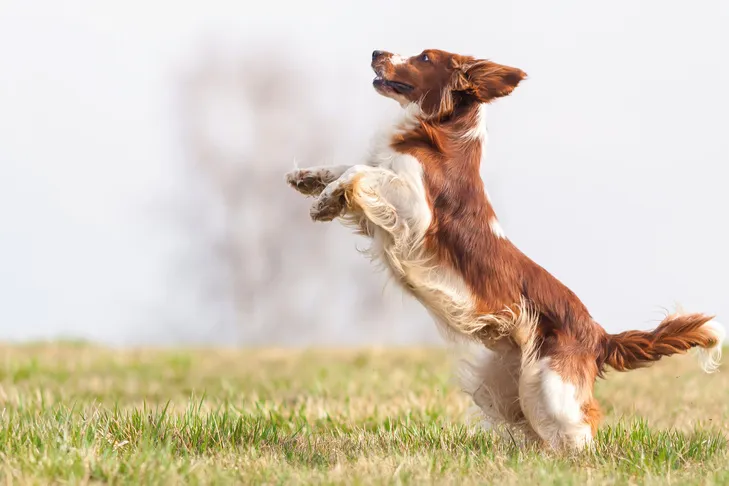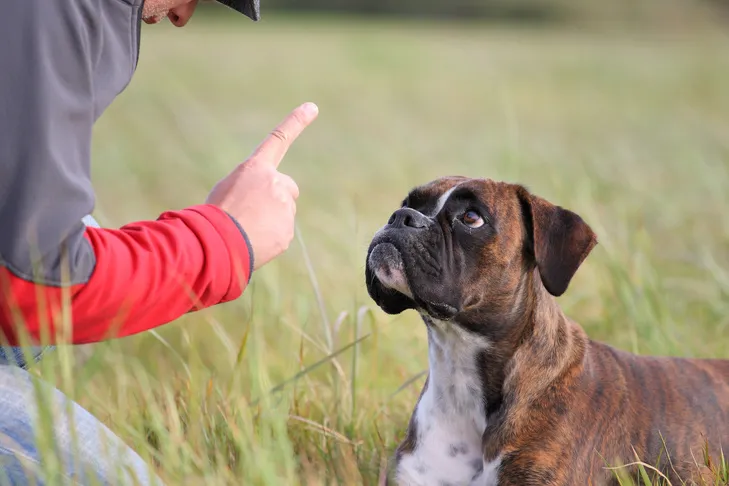Jumping up to greet is one of the most common dog behavior issues owners face when trying to stop your dog from jumping up. It’s not just annoying—it can knock over kids, seniors, or anyone in nice clothes, leaving muddy paws or scratches behind. Your dog isn’t being naughty; they’re just excited to say hello at face level, a natural canine instinct that grabs your attention fast. The good news? You can teach them a better way, like keeping all four paws on the floor or sitting politely. These 10 expert tips from seasoned dog trainers will help you curb this habit effectively and safely.
For more on building boundaries, check out our guide on teaching a dog to stay off furniture.
1. Reward Only When All Four Paws Are on the Floor
The smartest approach to stop your dog from jumping up is teaching an alternative behavior that’s physically impossible while jumping, like standing with paws down or sitting. Ignore jumps completely and shower praise only when they’re calm and grounded. Consistency is key—don’t allow it sometimes and scold others, or they’ll get confused. This positive reinforcement speeds up learning by showing exactly what earns your love.
2. Praise Immediately When They Do It Right
Dogs thrive on operant conditioning: behaviors that pay off get repeated. The second your dog’s front paws hit the floor, give instant attention with pets, praise, or treats. Delay it, and they might jump out of impatience. Make greetings rewarding right away to reinforce the polite behavior you’re after.
3. Withdraw Attention During Jumps
To extinguish jumping, remove the payoff—your focus. Turn your back or step away calmly when they leap. The moment all paws return to the floor, pivot back with quiet affection. This on-off switch teaches them jumping pushes you away while calm gets you closer.
 Welsh Springer Spaniel jumping up outdoors.
Welsh Springer Spaniel jumping up outdoors.
4. Set Them Up for Success from the Start
Trial-and-error works, but guide them faster. Prompt a sit as you enter or toss treats on the ground—they can’t jump and sniff simultaneously. Be quick to reward before excitement builds. Gradually fade treats as they master keeping paws down, combining it with your attention.
If staying calm is part of the plan, learn more in how to teach stay to your puppy.
5. Always Reinforce Proper Greetings
Never skip rewards, even after frustrating jumps—your dog needs clear consistency. Withholding praise when they finally settle confuses them and slows progress. Stay patient; reliable reinforcement builds the habit fast.
6. Avoid Grabbing or Pushing Them Down
Physical corrections like holding paws or shoving reward the jump with attention, even negative. It might spark rough play, encouraging harder leaps. Stick to ignoring instead to avoid escalating the issue.
 American Hairless Terrier jumping up on the leg of its owner outdoors.
American Hairless Terrier jumping up on the leg of its owner outdoors.
7. Skip the Knee Block Method
Raising your knee might seem deterrent, but it often mimics play or hurts trust, potentially causing injury or recall issues. Punishment erodes your bond—focus on positives to keep greetings fun and safe.
8. Keep Excitement Low During Training
High energy fuels jumps, so dial down your entrance: calm voice, no big fuss. Dogs mirror emotions, so quiet praise helps them self-regulate. Ramp up enthusiasm only as they reliably stay grounded.
Prevent related habits with tips on training your dog to stay off the couch.
9. Manage Access to Guests
Family and visitors can undo progress by petting jumpers. Leash, crate, or gate your dog during arrivals. Send them to a mat or bed first, building distance until ready.
 Boxer laying down outdoors being trained by a man.
Boxer laying down outdoors being trained by a man.
10. Coach Others to Follow Your Rules
Instruct guests: no attention until paws are down. Use “watch me” cues or toys as distractions around strangers. Practice with cooperative family first before real-world tests.
For sofa-specific jumps, see how to stop a dog jumping on sofa.
Mastering these steps transforms chaotic greetings into polite ones. Stay consistent, patient, and positive—your dog will soon greet calmly, strengthening your bond. Struggling? Reach out to Dog Care Story experts for personalized training advice today.
